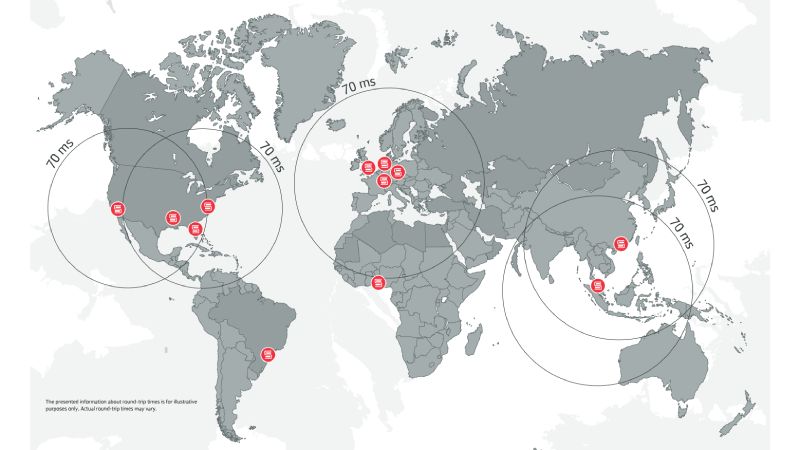
A lot of multiplayer gaming is done online, so there’s more latency and necessity for fail-safe options to ensure access and gameplay isn’t interrupted. This is where the data center comes into play as an essential power—home to millions of dedicated game servers.
A dedicated game server is a computer configured solely for hosting multiplayer games. It enables users to connect with one another around the world in safe, secure environments. While many games still participate via peer-to-peer (where one player starts up a game and his/her computer becomes the game-hosting machine), dedicated game servers allow for other gaming possibilities. For instance:
- Less Downtime: A dedicated server isn’t going to go down because a player’s computer goes down; it doesn’t need a player’s computer to stay operational. There are no hardware failures, crashes, or offline networks to worry about. IDC found that by 2023, 87% of gamers expect that dedicated servers will have 99.9% uptime or better.
- Better Scalability: Games can start slow and on a small level, but become exponentially popular. Dedicated servers enable increased limits for players without fail and provide support for growing interest without diminishing performance. The market for gaming servers is anticipated to be valued at 5.96 billion dollars by 2028. The gaming server market is projected to grow at a CAGR of 1%.
- Safety & Anti-Cheat Measures: With games being played on a protected data center, the chance of DDoS attacks, cheating, and other nefarious activities that complicate a level playing field is low. 78% of those surveyed who play online multiplayer have encountered cheating, according to a 2022 study. Games need to be on secure servers.
- Lower Operating Costs: Paying for your own server is costly; however, dedicated game servers from third-party data centers can cut costs by as much as 40%, according to Grand View Research.
Ultimately, in an increasingly globalized world, data centers drive the gaming sector to ensure that dedicated game servers operate at peak performance. They impact the gaming industry by:
1. Global Presence & Low Latency Networks
Gaming companies have data centers in different regions of the world so that geography is not an issue between the company servers and the ultimate user. This latency creates a low-latency situation necessary for competitive gaming, whether it be FPS or RTS. For example, according to Akamai, one additional second of latency decreases engagement by 20%. However, at latency levels of 150 ms or higher, 85% of all gamers are likely to drop out of a game session.
2. High-Performance Hardware
Data centers use enterprise-level hardware designed specifically for gaming. The enterprise-level CPUs, NVMe drives, and large amounts of RAM for dedicated game servers, for example, ensure expected oversight of large-scale processing, user information, and real-time needs. For instance, the processors that power the best gaming servers on the market last year include the latest versions of AMD EPYC and Intel Xeon; they process over 30% faster than the generation before. In addition, liquid cooling developments relative to such data center efforts reduce efficiency costs by 20% while enhancing efficiency.
3. Redundancy & Reliability
Redundancy creates no data center downtime and disruptions in service. Backup power supplies, failover systems, and even additional servers in regionalized locations means that no matter where the network exists or the users exist, there exists less service interruption should something crash or there are remote connectivity problems. On average, a Tier IV data center—which is the tier rating level for data centers—has 99.995% uptime annually (or about 30 minutes of downtime each year). Reliability is essential. According to Uptime Institute, an average company loses $9,000 per minute for unscheduled data center disruptions.
4. Cloud & Hybrid Solutions
As the cloud gaming industry grows, part of what new data centers are offering is the arrival of cloud gaming dedicated servers. This means that, should developers choose, their infrastructure requirements can be adjusted—transformed in an instant. Moreover, with hybrid solutions—where a standard dedicated server blends with the cloud’s flexibility—gaming companies are guaranteed the ability to accommodate demand during high-traffic times. For example, the global cloud gaming market is projected to grow from $1.6 billion (2021) to almost $13.5 billion by 2028. In addition, according to Statista, in 2024, cloud gaming services have increased by 400% over the past five years, with an international user base of over two hundred million.
5. Security & Compliance
Gaming companies need to worry about player information, microtransactions, and game server availability. A game data center not only complies with the necessary availability and security the gaming industry requires for a stable experience, but it also adds another level of security with gaming-specific firewalls and intrusion detection systems.
6. Energy Efficiency & Sustainability
Relative geographical positioning and proximity are everything. While gaming adds to global data center energy usage, the top-tier ones use renewable energy and renewable cooling solutions to mitigate their energy footprints. The worldwide green data center market should surpass 142.8 billion dollars by 2030—progressing toward carbon neutrality. For instance, according to Energy Star, last year, Energy Star-rated energy-efficient gaming servers used 25% less power than the three years before that.
Choosing the Right Data Center Partner
The moment gaming companies are prepared to fine-tune their multiplayer experience is when they must partner with an experienced, trustworthy data center solutions provider who specializes in dedicated game servers. For example, businesses like Servers.com fulfill the requirements of the gaming industry with tailored solutions.
The Future
Regarding future gaming developments, data centers will be crucial for effective multiplayer functionality. For example, professional data center dedicated game servers provide gaming companies with low latency—but also proprietary security and scalability to keep their games from getting stale—be it competitive sessions or questing in an open world/MMORPG. Data centers are the glue that holds the online gaming world together. Not to mention, by 2030, there will be 500 exabytes of gaming traffic, requiring the resources to support this burgeoning industry.